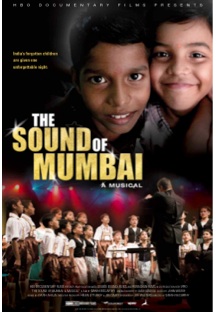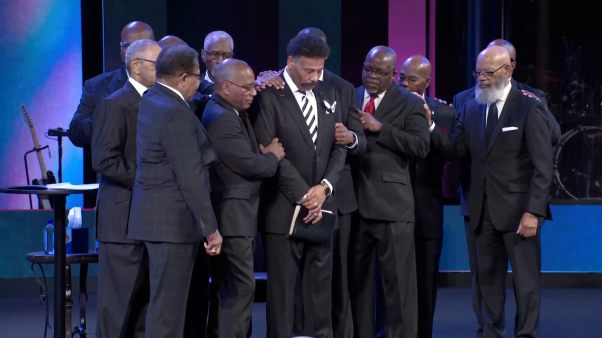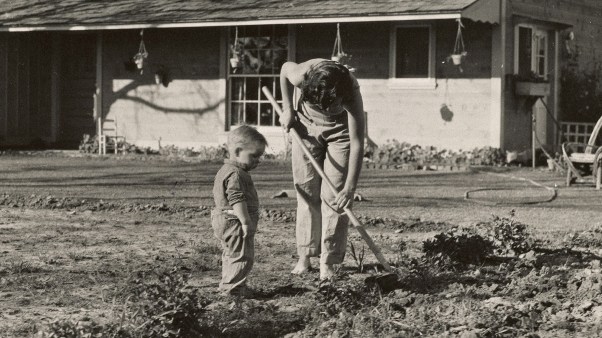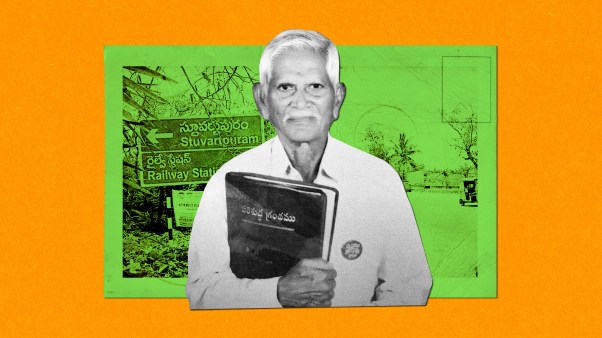In Slumdog Millionaire, a young man escapes Mumbai’s extreme poverty by winning a ton of money on a game show. It was, of course, fiction.

When I tell people that my teenage daughter loves to cosplay, they often have no idea what I'm talking about. Cosplay? What's that?
Costumed play, or cosplay, has emerged as a colorful subculture of dress up and role-play. Cosplay conventions are major events where tens of thousands of fans gather, united by their love of anime/manga (types of Japanese animation) or their favorite comics.
The popular Comic-Con International in San Diego—coming up this weekend, July 24-27—will draw as many as 130,000 guests, and smaller regional and local cons take place all across the country.
Most who attend come dressed as one of their favorite characters. Regardless of the subgenre—superheroes, sci-fi figures, steampunks, zombies—cosplayers are expected to have made their costumes. Store-bought costumes are just not the same as the detailed replicas, bright wigs, and bold accessories shown off in the world of cosplay.
About five years ago, my daughter became interested in cosplay and created her first costume to attend a convention. Since then, we have made countless trips to craft store as I learned to sew, trace, and glue; create patterns from scratch; and apply stage makeup. My husband and I, transformed by her vision and design, even joined her as fellow Pokemon characters. (We looked the part—enough to get stopped for photos—but had to fake it a bit because our Pokemon knowledge is extremely limited.)
Some people may wonder why I decided to cosplay with my daughter or even let her get involved with such an unusual hobby in the first place. The worst of the cosplay critics worry that this subculture represents something dangerous, cultish, and strange. I speak to you as a cosplay convert, a parent who has come to see great value in my daughter's interest in this fun, imaginative, costumed world.
To start, conventions generally maintain a family-friendly atmosphere, with video games, discussion panels, costume pageants, photo sessions, and other activities. (Late-night activities may be 18 and up.) While parents may notice some cosplayers in "sexy" costumes featuring cleavage, corsets, and short shorts, most con-goers focus on accuracy and imagination over sex appeal.
Outsiders may be concerned about some of the characters and the "evil" depicted in certain series. But the themes of cosplay ultimately relate back to classic storytelling archetypes: the ongoing struggle between good and evil, heroes and villains, light and dark (not to mention, a message pivotal to the gospel). So as a Christian and a mom, I not only allow my daughter to cosplay, I encourage it.
I celebrate how these teens, often considered "outsiders" in high school, now have their own community, extending beyond the Internet realm to meet in person. These geeks and nerds, as they cheerfully label themselves, are a smart, witty, and sarcastic crowd. They have created a place where they can celebrate, welcome, and value one another. In a post about cosplay last year, Think Christian pointed out the psychological parallels between cosplay dress-up and the biblical metaphor of "putting on the armor of God":
Robin Rosenberg, a psychologist and writer for Psychology Today, is investigating the psychology behind cosplay. She believes identity play is the most important factor, noting that many cosplayers are passive, shy, introspective people who are able to express greater confidence and communicate more readily when dressed as a strong character.
Cosplay and these conventions have given me the opportunity to connect with my daughter on a meaningful level as she grows up. As Christian parents, when our children enter high school, we often find ourselves in the role of rule-enforcer. Plus, at this stage, teens tend to be solitary creatures. In my family, our shared involvement in cosplay helps us break through that distance. When we work on a costume, talk about anime, or watch a show, we are creating a shared experience that is helping us remain bonded through her teenage years.
While many parents worry that our children's obsession with technology is killing their imaginations, cosplay represents a 21st-century hobby that is a creative, constructive endeavor. Together, we've enjoyed shopping, learning to sew, and practicing makeup techniques. Most importantly, I am showing her that I value her and her interests. I might not completely understand everything that she loves, but I love her.
This goes for any unfamiliar activity your teen suddenly develops a passion for. As parents, rather than lamenting how we don't understand their hobbies, perhaps we should see it as an opportunity to demonstrate how we value their interests, learn something new, and maybe even find an activity we happen to personally enjoy as well.
If your teen gets into cosplay, I'd challenge you to resist rolling your eyes and consider it a vehicle to be more involved with them. My five quick tips for cosplay parents:
1) Enjoy the bonding experience. Reserve judgment. I don't understand or appreciate all of the anime series, games, or movies, but I do enjoy the creativity of making a costume out of odd bits. In this hands-on time, we have created fun memories.
2) Bring out your inner perfectionist. I am not a perfectionist, but this is an activity where details matter and you'll want to get things exactly right. I've had to take a deep breath and allow do-overs—like holding out for the perfect shade of blue felt.
3) Help select the costumes. Consider the difficulty, safety, and ease of wearing certain costumes. I discourage anything that makes it hard to walk, see, or hear. (One year, my daughter attached fake ears over her own ears, which made it hard for her to hear me when I called for her.) Also, be prepared with supplies to take off make-up or glue with plenty of wipes, old washcloths, and a tub of Noxema.
4) Realize that some screening may be needed. Not all material is appropriate for children or younger teens. Japanese manga has age ratings on the back, as do video games. I don't think the convention atmosphere is any more risky than watching other media, but as a parent you will probably want to keep an eye on what is around at a given event.
5) Send your teen with a buddy and a cell phone. When I am not with my daughter, I stay accessible to the convention site. She has a cell phone and goes with a friend. It is not a good idea for younger children to attend alone, since the convention centers are large and crowded.
This article was inspired by a post Jamie Janosz wrote for her blog called, "My Life as a Cosplay Mom." Jamie is a writer, wife, mother, and can most often be found exploring thrift and antique shops. She and her husband, Milt, enjoy participating in the Chicago rockabilly scene. Jamie works as the content strategy manager at Moody Bible Institute in Chicago and is the author of When Others Shuddered: Eight Women Who Refused to Give Up by Moody Publishers. Read more about women of faith and her passion for collecting vintage at http://jamiejanosz.blogspot.com/.
In The Sound of Mumbai: A Musical, premiering Nov. 23 on HBO2, a young boy hopes to escape Mumbai’s extreme poverty by getting his own share of the spotlight. He doesn’t. And it’s fact.
A compelling documentary, The Sound of Mumbai follows the story of 20 young children from Mumbai’s slums who have been selected to sing songs from The Sound of Music with the Bombay Chamber Orchestra at the National Centre for the Performing Arts, a ritzy facility normally inaccessible to the poor.
The film zeroes in on charismatic 11-year-old Ashish, whose unbridled optimism and persistent smile grab you from the moment you meet him. He is chosen to sing a solo, and he’s both thrilled and nervous at the prospect of singing in front of a thousand in such an important spotlight. He looks in the mirror and gives himself pep talks, telling himself that he IS confident – whether he really believes it or not. Articulate and outgoing, Ashish comes to believe that this opportunity is his ticket, and his family’s, out of the slums and into a better lifestyle. He’s convinced that he’ll get noticed, and someone from the aristocracy will pay for a private education so that he can someday become “a doctor or a scientist,” and earn the money needed for a better lifestyle.
It’s interesting how snippets of Rogers & Hammerstein’s songs play perfectly into the story. “Climb Every Mountain,” with its admonishment to “follow every rainbow till you find your dream,” aptly describes the hope of these children. Ashish’s pep talks mirror the message of Maria’s song, “I Have Confidence”: “With each step I am more certain /
Everything will turn out fine / I have confidence the world can all be mine / They’ll have to agree I have confidence in me.”
But then there’s that haunting tune sung by Maria and the Captain, “Something Good,” with its reality-check lyrics: “Nothing comes from nothing / Nothing ever could.” And amid all of the smiling faces and colorful optimism of The Sound of Mumbai, you can’t help but think of how rare it is to escape India’s caste system, for “the least of these” to move up the socio-economic ladder.
“It would be easy to say, if they believe in their dreams, they will do it,” says Johannis Steinwender, the orchestra’s Austrian-born conductor who puts the program together. “That would be the American way. But this is not America. This is India.”
Will Ashish, like Jamal in Slumdog Millionaire, beat the odds and ultimately escape the slums?
Click here for HBO’s showtimes, and here’s the trailer:








